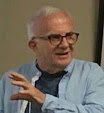At first I suspected my desire to appear more southern than I have a right to claim to be. Homily. Hominy. Homily. Hominy. Homily. Hominy. This word association evokes all things truly southern. The very sound of it suggests a languid, non-pretentious, warm-morning southern repast. Perhaps I will even develop a drawl.
“Hominy” derives from the Algonquin term for grain; it never occurs alone. What is its partner? “Grits.” True grits. Real Southerners spot us interlopers a mile away:
“What would you like for breakfast, sir?”
“I’ll have a grit.”
“A grit? I’m sorry, sir. They never come alone.”
I think a good sermon ought to be a little “gritty,” don’t you? Grits on your plate keep you humble. The best upscale sermons ever savored still have some down home common sense about them.
But I don’t think this is it. My Catholic friends point out that they “do” homilies while Protestants “do” sermons. So maybe there’s a wanna-be priest lurking in my robe. But while I confess to being an ecu-maniac, and believe with every fiber of my being that we should work that “all may be one,” I have no desire to exchange the riotous freedoms of our tradition for the particular restrictions of another.
I asked my erudite colleagues to tell me the difference between a homily and a sermon. No one seems to know. I asked you who sit through them. “Homilies are shorter,” you say. With all do respect, I think you beg the question. Certainly my homilies are not shorter. (“Pastor,” pleaded one member, “your words don’t have to be eternal in order for them to be immortal.”)
Finally I looked in the dictionary. “Homily” is rooted in the Greek homiletikos, meaning “conversation.” “Sermon” comes directly from medieval Latin for “speech”, and that probably derives from serere, “to link together or string together” like beads on a necklace. While both words carry the meaning of “a religious discourse before a congregation,” the nuance of homily is “an informal exposition usually of Scripture.” “Sermon” carries the additional shade of “an annoying harangue”.
I am allergic, by temperament, to harangues. I cherish dialogue. I like the thought that what I say from the pulpit is one piece of a much longer conversation that has been going on for centuries.
So as I prepare for our worship, perhaps I am asking myself this question: “What shall it be this Sunday? An informal exposition, or an annoying harangue? A speech, or a searching conversation?”













